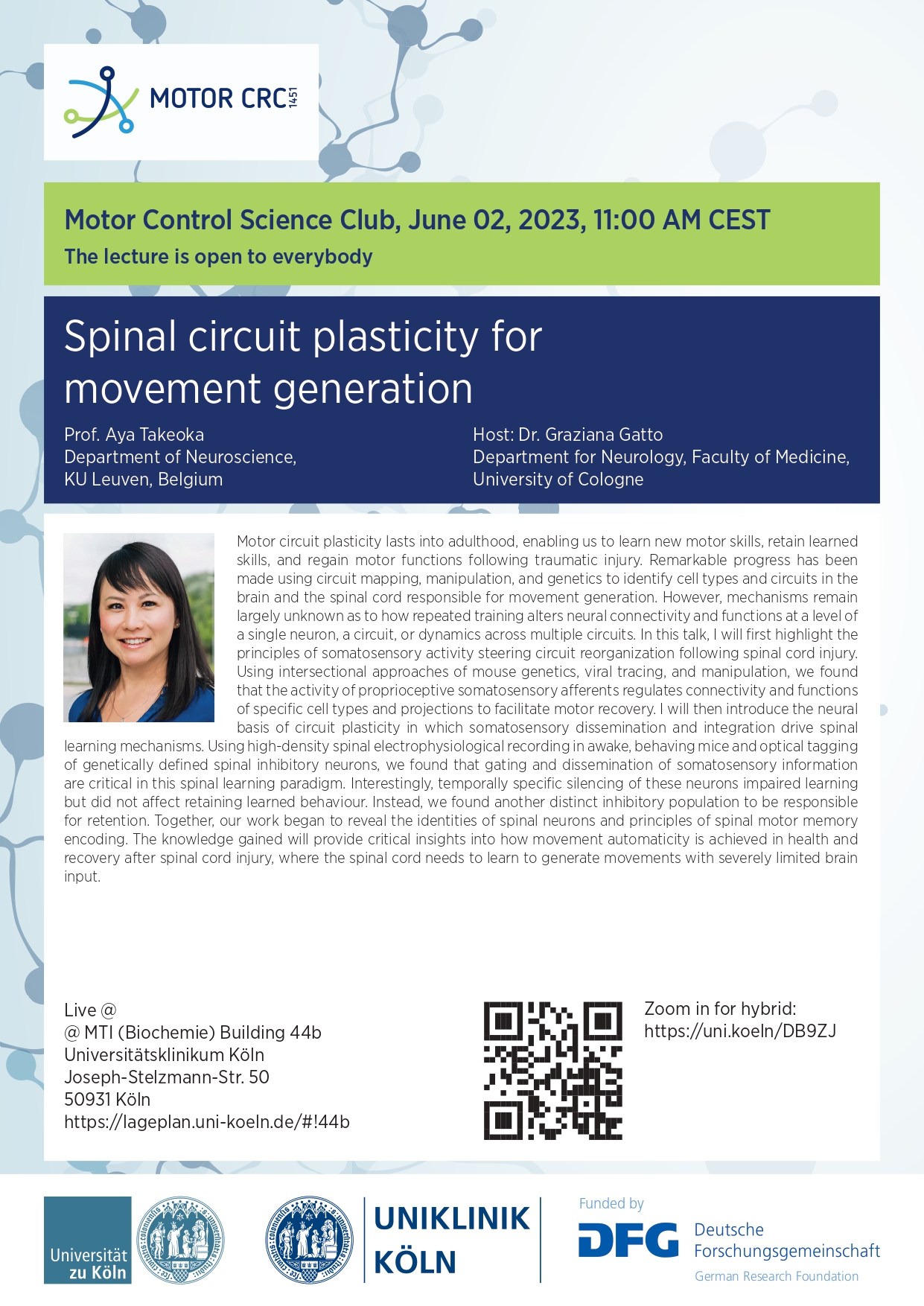
Abstract:
Motor circuit plasticity lasts into adulthood, enabling us to learn new motor skills, retain learnedskills, and regain motor functions following traumatic injury. Remarkable progress has beenmade using circuit mapping, manipulation, and genetics to identify cell types and circuits in thebrain and the spinal cord responsible for movement generation. However, mechanisms remainlargely unknown as to how repeated training alters neural connectivity and functions at a level ofa single neuron, a circuit, or dynamics across multiple circuits. In this talk, I will first highlight theprinciples of somatosensory activity steering circuit reorganization following spinal cord injury.Using intersectional approaches of mouse genetics, viral tracing, and manipulation, we foundthat the activity of proprioceptive somatosensory afferents regulates connectivity and functionsof specific cell types and projections to facilitate motor recovery. I will then introduce the neuralbasis of circuit plasticity in which somatosensory dissemination and integration drive spinallearning mechanisms. Using high-density spinal electrophysiological recording in awake, behaving mice and optical taggingof genetically defined spinal inhibitory neurons, we found that gating and dissemination of somatosensory informationare critical in this spinal learning paradigm. Interestingly, temporally specific silencing of these neurons impaired learningbut did not affect retaining learned behaviour. Instead, we found another distinct inhibitory population to be responsiblefor retention. Together, our work began to reveal the identities of spinal neurons and principles of spinal motor memoryencoding. The knowledge gained will provide critical insights into how movement automaticity is achieved in health andrecovery after spinal cord injury, where the spinal cord needs to learn to generate movements with severely limited braininput.Zoom





